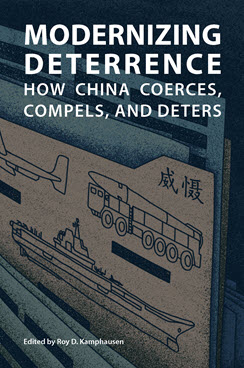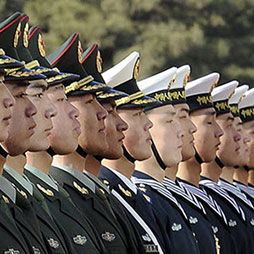Foreword to "Modernizing Deterrence: How China Coerces, Compels, and Deters"
This is the foreword to the edited volume “Modernizing Deterrence: How China Coerces, Compels, and Deters.”
I am honored to introduce Modernizing Deterrence: How China Coerces, Compels, and Deters, the latest volume from an important conference series on the Chinese People’s Liberation Army (PLA) convened by the National Bureau of Asian Research (NBR) and U.S. Indo-Pacific Command. In the wake of the most extensive PLA reforms in decades, the leadership of the People’s Republic of China (PRC) is aggressively integrating military and nonmilitary capabilities to advance foreign policy objectives in competition with the United States and its allies. The outstanding work of the authors in this volume is a thorough and insightful examination of the evolution of the PRC’s strategic concepts and the PLA’s growing role in supporting the PRC’s ambitious pursuits.
As noted in the 2022 U.S. National Security Strategy, the PRC is the only strategic competitor with both the intent to reshape the international order and the economic, diplomatic, military, and technological power to do so. Increasingly, the Chinese Communist Party (CCP) is using all elements of national power to undermine the rules-based international order. Understanding how the party is integrating its growing military power among its other elements of national power to achieve these goals provides invaluable strategic insights into the thinking of CCP leadership. Moreover, while numerous studies and reports have focused on the military dimension of the CCP’s approach, this NBR volume explores the party’s commitment to pursuing dominance in a much broader, all-domain strategy that aggregates all available economic, technological, military, and strategic effects. The U.S. Indo-Pacific Command is particularly interested in how the CCP plans to coordinate and integrate all the levers of national power in pursuit of the PRC’s regional and global objectives.
This collection of papers from the 2021 PLA Conference offers unique insights into understanding China’s strategic thinking regarding deterrence and crisis management across a number of domains. It addresses conventional and nuclear deterrence, underscoring ways in which emerging capabilities will enable Beijing to challenge traditional U.S. nuclear overmatch. It also addresses evolving Chinese thinking on deterrence in emerging domains, such as space and cyber, as well as the PRC’s attempts to leverage disruptive technologies to improve its strategic deterrence capabilities. The volume highlights the evolving nature of warfare, notably articulating the development of a new strategic triad. Whereas that term once reflected strictly the nuclear weapon delivery capabilities of bombers, submarines, and ground-based missiles, the new strategic triad is perhaps more appropriately defined along nuclear, cyber, and space lines. Indeed, emerging space and cyber capabilities are leading to capabilities that can generate catastrophic effects across societies that are analogous to those generated by nuclear forces but without the immoral stigma associated with a nuclear explosion. In other words, nonkinetic effects could potentially be just as strategically powerful as kinetic effects, if not more so. Finally, this volume examines the degree to which Beijing is confident in its ability to manage escalation in crisis and conflict, identifying potential CCP responses should deterrence fail.
The authors’ findings offer important insights for understanding how the PRC’s thinking regarding deterrence is continuing to evolve and what this means for planners, policymakers, and warfighters. I am proud to see this essential work continue and commend the organizers, sponsors, and participants who made this volume possible.
Stephen D. Sklenka
Lieutenant General, USMC
Deputy Commander, U.S. Indo-Pacific Command
February 2023



